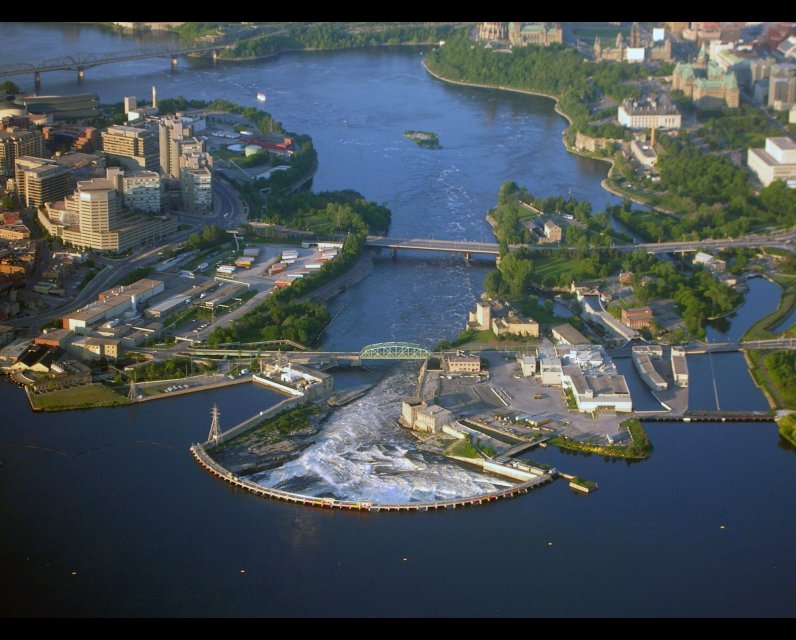Unpublished Opinions
Paul is a local high-tech executive, field naturalist, and is well-known as an environmental spokesperson. He is also an active supporter of indigenous rights and respect for traditional aboriginal values which includes everyone's responsibility for stewardship over our environment.
Improving Ottawa's Green Vision via Ginawaydaganuc

As knowledge of the ongoing effect of climate change awakens the need to improve Ottawa’s actions for becoming a greener city, I am reminded about Grandfather William Commanda’s (principal spiritual elder of the Algonquin) teaching that individuals often need to improve their relationship with nature before improving other relationships. This teaching is based on the Algonquin principle of Ginawaydaganuc, meaning that all living things are all inter-connected. To become stronger in our inter-personal connections, we first need to strengthen our spiritual connectedness with nature – which is the common connection between all of us and thus the foundation for our relationships.
Applying this thinking to the problem of “What does it take to get a City to improve its relationship with nature?” reveals that the key is to provide a focal point within the City for improving people’s relationship with nature.
I have long tried to protect the South March Highlands (SMH) as such a focal point because it is the most bio-diverse area of the City. Walking within the SMH, the body experiences the full beauty of nature and the mind examines an amazing ecology that supports the two dozen species-at-risk that can be found there. The SMH is a green and wild zoological park that continues to be eroded and threatened by development by developers such as KNL, Regional, and Richcraft.
Although protecting the SMH from development is still essential to maintaining bio-diversity in Ottawa, providing a focal point for mind and body is not enough. The spiritual medicine of sweet grass is braided with 3 strands – representing mind, body and spirit. This metaphor teaches us that a spiritual aspect must also be present as part of the process of purification and renewal.
Ottawa’s natural environment is defined by the Ottawa River watershed, the centrepiece of which is the river itself. The Algonquin called the river the Kitchisippi (Great River) and considered Asinabka, (place of Glare Rock) sacred primarily because of Akikpautik (Pipe-Bowl Falls) – the pail-like circular rapids that the French explorers nicknamed Chaudière (Cauldron). The circular rapid resembled the bowl of the sacred pipe and caused a permanent vertical spray to be sent upward – just like pipe smoke.
Canada’s First Nations believe that water represents the blood of Gaia (Mother Earth) because, just like blood sustains the body, water sustains all life and so the rivers of Mother Earth must be her veins. Consequently, the sacred spray from the great river at the Chaudière was used by the ancient Algonquin to carry their prayers heavenward, much as they continue to employ the smoke in a Sacred Fire to accomplish the same goal today. To my knowledge, there is only one larger whirlpool rapid in North America at Niagara which is equally sacred to both the Mohawk and Ojibwa.
As a result, it is not surprising that there is archaeological evidence of the Anishinabe (Original People) use of the Chaudière Islands as a meeting place for nearly 12,000 years. So we might conclude that the river has re-invigorated the spiritual relationship of local residents for a very long period of time!
Just as ancient residents renewed themselves and their relationship with nature at the Chaudière Falls in times past, modern residents in the City of Ottawa can do the same if the falls are returned to their natural state. Rallying both politicians and citizens around a restoration of the Chaudière Falls will set in motion the spiritual force needed to improve Ottawa’s relationship with nature.
Grandfather Commanda’s eco-vision for the Chaudière Islands as a green area replanted with indigenous species (www.asinabka.com), is in stark contrast to the proposed condo development by Windmill and provides a much stronger spiritual basis for undertaking the green reforms needed elsewhere in Ottawa. This vision was first made public when Grandfather Commanda was presented the Keys to the City of Ottawa in 2006 and was actually endorsed by City Council in 2010. This precedent seems to have been forgotten – along with the fact that neither the City nor the NCC has legal title to the islands and lack the legal right to approve development there without aboriginal consent. The area has never been sold or surrendered and is occupied only under the terms of an old lease that was obtained under false pretenses.
Providing a spiritual core for the City will not only rejuvenate residents, it will provide a strong eco-tourism benefit. The Chaudière Falls are second only to Niagara in size and beauty prior to being entombed by dams and pulp & paper industries. The entombment of the falls was originally done to provide a power source for Ottawa as electricity was introduced at the turn of the twentieth century. Yet this dam is no longer necessary in this modern age of solar power farms and declining industrial use in this area.
The time has come to recognize that progress is not simply equated with development, which is inherently unsustainable, but by sustainable management of our natural resources which is the foundation for our economy as well as our relationships. Freeing the falls of its industrial chains can provide the symbolic freedom from the industrial age of exploitation that will liberate our thinking as we enter a more sustainable age.



Comments
Be the first to comment